Springform pans are culinary marvels, transforming ordinary baking into a symphony of flavors and aesthetics.
These ingenious creations boast a removable bottom and a sides that can be easily detached, making them the secret weapon for crafting impeccable cakes, tarts, and delicate desserts.
With their ability to release intricate creations flawlessly, springform pans elevate baking to an art form, allowing both amateur bakers and seasoned professionals to unleash their creativity with ease.
Whether it’s a decadent cheesecake or a flaky quiche, the springform pan’s versatility and precision make it an indispensable tool in every kitchen, promising perfection with every sweet creation.
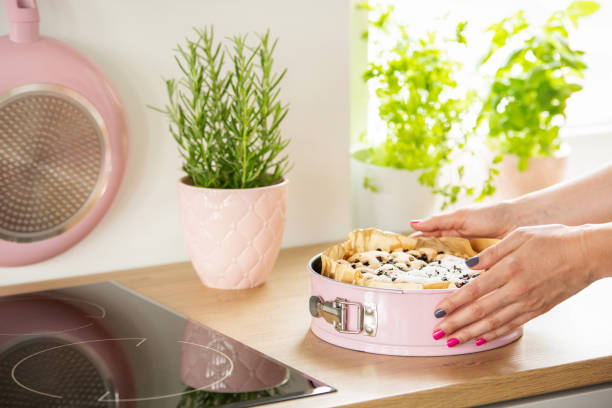
What Is A Springform Pan
A springform pan is a versatile baking tool that features a removable bottom and a latch on the side, allowing for easy removal of delicate baked goods like cheesecakes and tarts without damaging their delicate crusts or shapes.
It’s often described as a “baking essential” or “must-have for home bakers” due to its convenience and ability to create professional-looking desserts.
The pan’s design, with its adjustable sides and tight seal, ensures that your baked creations come out perfectly every time, making it a favorite among baking enthusiasts and professionals alike.
With its reputation for reliable performance and effortless dessert release, the springform pan has become synonymous with hassle-free baking and stunning presentation, earning its place as a beloved kitchen staple.
Understanding the Structure of a Springform Pan
Here’s a detailed explanation of understanding the structure of a springform pan, covering the description of its components and the materials used in making springform pans.
Description of the Pan’s Components
- Circular Base: The circular base of a springform pan is typically made of sturdy material like stainless steel or aluminum. It serves as the foundation for the baked goods and provides stability to the pan.
- Detachable Ring: The detachable ring is a key feature of a springform pan. It is usually made of the same material as the base and surrounds the baking area. The ring can be removed from the base by releasing the latch mechanism, allowing for easy removal of delicate baked goods like cheesecakes without damaging their shape.
- Latch Mechanism: The latch mechanism is what holds the detachable ring in place on the circular base. It is designed to securely lock the ring during baking and can be easily released to remove the ring once the baked goods are cooled and ready to be served.
Materials Used in Making Springform Pans
- Stainless Steel: Many springform pans are made of high-quality stainless steel due to its durability, resistance to corrosion, and ability to distribute heat evenly. Stainless steel springform pans are often dishwasher safe and can withstand high temperatures, making them suitable for a wide range of baking tasks.
- Non-stick Coatings: Some springform pans feature a non-stick coating on the interior surface of the base and ring. This coating prevents food from sticking to the pan, making it easier to release delicate baked goods without the need for greasing or flouring the pan.
- Aluminum: Aluminum springform pans are lightweight yet durable, making them easy to handle and store. They also conduct heat well, ensuring even baking results. However, aluminum pans may not be dishwasher safe and require gentle hand washing to preserve their non-stick properties.
Concisely, a springform pan consists of a circular base, detachable ring with a latch mechanism, and is commonly made of materials like stainless steel, non-stick coatings, or aluminum. Each component and material choice contribute to the pan’s functionality, ease of use, and baking performance, making it a versatile tool for creating a variety of delicious baked treats.

Types of Springform Pans
When it comes to types of springform pans, there are several variations available, each designed for specific baking needs and preferences. Here are some common types of springform pans:
Standard Springform Pans
- These are the traditional springform pans that come with a detachable ring and a circular base. They are versatile and suitable for various baking recipes like cheesecakes, quiches, and tortes.
Mini Springform Pans
- Mini springform pans are smaller versions of standard springform pans, perfect for making individual-sized desserts like mini cheesecakes, tarts, or personal-sized cakes.
- They are ideal for portion control and creating a variety of desserts for gatherings or parties.
Deep-Dish Springform Pans
- Deep-dish springform pans have taller sides compared to standard pans, allowing you to create deep-dish pies, cakes with multiple layers, or desserts with generous fillings.
- They provide extra room for creativity and customization in your baking projects.
Silicone Springform Pans
- Silicone springform pans are made of flexible silicone material, which makes them non-stick and easy to release baked goods without the need for greasing. They are also dishwasher safe and come in various shapes and sizes, offering versatility in baking options.
Decorative Springform Pans
- Decorative springform pans feature intricate designs or patterns on the base or sides, adding a decorative touch to your baked creations. They are great for special occasions or when you want to impress with beautifully designed desserts.
Non-Stick Springform Pans
- Non-stick springform pans are coated with a non-stick surface, making them ideal for easy release of baked goods and hassle-free cleanup. They are available in different materials like carbon steel or aluminum with a non-stick coating.
Professional Grade Springform Pans
- These pans are designed for commercial or professional use, featuring heavy-duty construction, reinforced edges, and superior heat conduction properties. They are built to withstand frequent use and high temperatures in professional kitchens.
Each type of springform pan offers unique benefits and is suitable for specific baking purposes. Choosing the right type depends on your recipe requirements, baking preferences, and desired outcomes for your delicious creations.
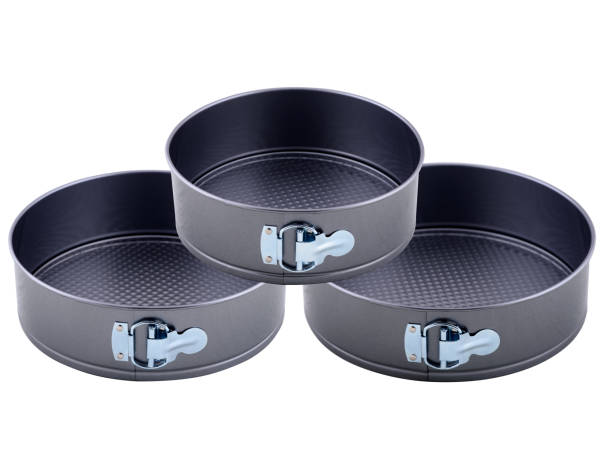
Advantages of Using a Springform Pan
Using a springform pan offers several advantages that make it a popular choice among home cooks and professional bakers alike. Here are the key advantages of using a springform pan:
Easy Release
The detachable ring design of a springform pan allows for easy removal of delicate baked goods such as cheesecakes, tarts, and quiches without damaging their shape. This makes serving and presentation effortless and helps maintain the appearance of your desserts.
Versatility
- Springform pans are versatile and can be used for a wide range of recipes, including sweet and savory dishes. They are suitable for baking cakes, pies, tortes, casseroles, and more, making them a must-have tool in any kitchen.
Uniform Baking
- The even heat distribution provided by a springform pan ensures that your baked goods are cooked evenly throughout, resulting in consistent texture and flavor. This helps prevent over-baked or under-baked areas in your desserts.
Customizable Fillings
- With the adjustable ring and removable base, springform pans allow you to create desserts with customizable fillings, such as layered cakes, cheesecakes with different toppings, or quiches with varied ingredients. You can easily add layers or decorations without worrying about them sticking to the pan.
No Need for Inverting
- Unlike traditional cake pans that require flipping to release the baked item, springform pans eliminate the need for inverting. This makes them ideal for delicate or fragile desserts that may lose their shape if flipped.
Easy Cleaning
- Most springform pans are dishwasher safe or feature a non-stick coating, making cleanup a breeze. The detachable parts can be separated and cleaned thoroughly, ensuring hygienic use for future baking projects.
Professional Presentation
- Springform pans provide a professional touch to your desserts with clean edges and uniform shapes. This enhances the presentation of your baked goods, whether you’re serving them at home or for special occasions.
Durable Construction
- High-quality springform pans are made from durable materials like stainless steel, aluminum, or silicone, ensuring long-lasting performance and resistance to warping or damage.
Overall, the advantages of using a springform pan include easy release, versatility, uniform baking, customizable fillings, convenience in cleaning, professional presentation, and durable construction, making it an essential tool for creating impressive and delicious desserts with ease.
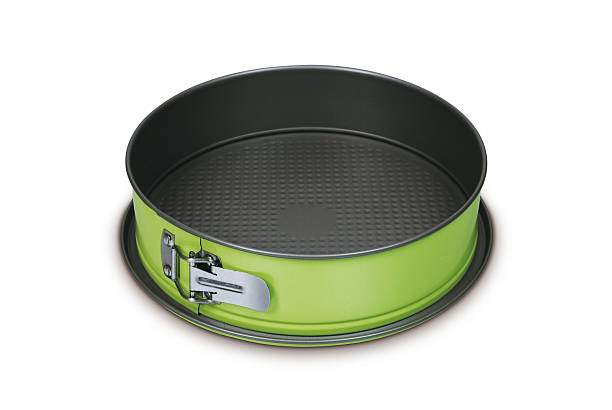
How to Use a Springform Pan
Using a springform pan is relatively straightforward, but it’s important to follow certain steps to ensure successful baking and easy release of your desserts. Here’s a guide on how to use a springform pan effectively:
Prepare the Pan
- Start by greasing the inside of the base and sides of the springform pan with butter or cooking spray. This helps prevent the baked goods from sticking to the pan.
- If your recipe calls for it, you can also line the base of the pan with parchment paper for extra insurance against sticking.
Assemble the Pan
- Place the circular base of the springform pan on a flat surface.
- Attach the detachable ring to the base by aligning the latches or clips. Make sure the ring is securely in place to prevent leaks during baking.
Add the Batter or Mixture
- Pour your prepared batter or mixture into the assembled springform pan. Make sure to spread it evenly for uniform baking.
Bake According to Recipe Instructions
- Preheat your oven to the temperature specified in your recipe.
- Place the assembled springform pan on the center rack of the oven and bake according to the recommended time and temperature in your recipe.
Cooling and Release
- Once the baking time is complete, remove the springform pan from the oven carefully using oven mitts.
- Allow the baked item to cool completely in the pan on a wire rack. This helps set the structure of the dessert and makes it easier to release from the pan.
Release the Ring
- Once the dessert is fully cooled, release the latch or clips on the springform pan’s ring.
- Gently lift the ring upward to separate it from the base.
- If necessary, run a knife around the edges of the dessert to loosen it from the base before lifting it out.
Serve or Store
- Transfer the dessert to a serving plate or platter if desired.
- If you’re not serving immediately, you can store the dessert in the springform pan with the ring removed or cover it with plastic wrap and refrigerate until ready to serve.
Cleaning the Pan
- Clean the springform pan thoroughly after use by hand washing with warm, soapy water. Avoid using abrasive sponges or cleaners that could damage the non-stick coating if applicable.
By following these steps, you can effectively use a springform pan to bake a variety of delicious desserts with ease and ensure they come out perfectly every time.
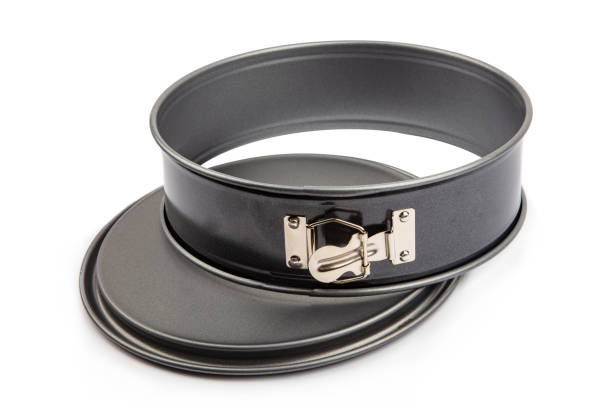
Popular Recipes Suited for a Springform Pan
There are numerous delicious recipes that are well-suited for baking in a springform pan due to its unique design and easy release capabilities. Here are some popular recipes that you can make using a springform pan:
- Cheesecake: Classic cheesecake is perhaps the most iconic dessert made in a springform pan. You can try variations like New York-style cheesecake, chocolate cheesecake, or fruit-topped cheesecake for a delightful treat.
- Layered Cakes: Springform pans are great for baking layered cakes with multiple fillings or frostings. You can create impressive cakes with different flavors and textures, such as chocolate and vanilla layers with buttercream frosting.
- Tarts and Quiches: Use a springform pan to make savory tarts or quiches filled with vegetables, cheese, meats, and herbs. The removable ring allows for easy slicing and serving of these savory delights.
- Flourless Chocolate Cake: A flourless chocolate cake baked in a springform pan results in a dense and rich dessert that’s perfect for chocolate lovers. Serve it with whipped cream or a raspberry sauce for added indulgence.
- Fruit Cobblers: Make delicious fruit cobblers or crumbles in a springform pan by layering fruit filling with a crumbly topping. Popular choices include apple cinnamon cobbler, peach crumble, or mixed berry crisp.
- Ice Cream Cake: Create a show-stopping ice cream cake by layering different flavors of ice cream, cookie crumbs, and toppings in a springform pan. Freeze until firm, then release from the pan for a festive dessert.
- Sponge Cake: Use a springform pan to bake light and airy sponge cakes that can be layered with whipped cream, fruits, or jam. These cakes are perfect for afternoon tea or special occasions.
- Baked Alaska: Impress your guests with a Baked Alaska dessert made in a springform pan. Layer cake, ice cream, and meringue before baking briefly in the oven for a stunning and delicious treat.
- Pumpkin Pie: Bake a classic pumpkin pie in a springform pan for Thanksgiving or fall gatherings. The easy release makes serving slices a breeze, and you can top it with whipped cream or caramel sauce.
- Mousse Cake: Create elegant mousse cakes with layers of chocolate or fruit mousse in a springform pan. Chill until set, then release from the pan for a smooth and creamy dessert.
These are just a few examples of popular recipes suited for a springform pan. Feel free to get creative and experiment with different flavors, fillings, and decorations to make delightful desserts that everyone will enjoy.
Tips and Tricks for Using a Springform Pan
Using a springform pan effectively can greatly enhance your baking experience and ensure successful results. Here are some helpful tips and tricks for using a springform pan:
Prepare the Pan Properly
- Grease the inside of the base and sides of the springform pan with butter or cooking spray, and consider lining the base with parchment paper for easy release. This step helps prevent sticking and ensures smooth removal of baked goods.
Check for Leaks
- Before adding the batter or mixture to the pan, double-check that the detachable ring is securely attached to the base and there are no gaps where batter could leak. This is especially important for liquid or runny batters.
Use a Baking Sheet
- Place the assembled springform pan on a baking sheet before placing it in the oven. This helps catch any potential leaks or drips and prevents messes in your oven.
Bake on a Lower Rack
- For even baking and to prevent the top of your dessert from over-browning, consider baking the springform pan on a lower rack in the oven. This allows for better heat distribution and a more evenly baked result.
Cool Completely
- After baking, allow your dessert to cool completely in the springform pan on a wire rack. This helps set the structure and prevents it from collapsing or breaking when you release it from the pan.
Loosen Edges Carefully
- Before releasing the ring, run a knife or offset spatula around the edges of the dessert to loosen it from the pan. This helps ensure a clean release without damaging the dessert.
Chill Before Removing
- For desserts like cheesecakes or mousse cakes, refrigerate them for a few hours or overnight before releasing the springform pan ring. Chilling helps firm up the dessert and makes it easier to handle.
Release Slowly
- When releasing the latch or clips on the springform pan ring, do so slowly and gently. Avoid sudden movements that could cause the dessert to break or lose its shape.
Clean Carefully
- Hand wash your springform pan with warm, soapy water after each use. Avoid using abrasive sponges or cleaners that could damage the non-stick coating or surface of the pan.
Store Properly
- Store your springform pan with the ring removed to save space and prevent warping. Ensure it is completely dry before storing to avoid rust or corrosion.
By following these tips and tricks, you can make the most out of your springform pan and create delicious baked goods with ease.
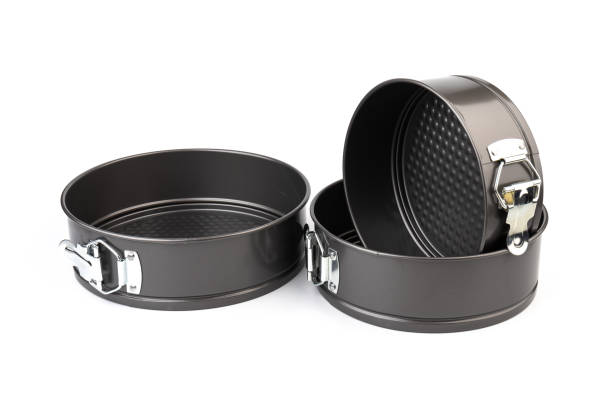
Alternatives to a Springform Pan
If you don’t have a springform pan or prefer to use alternatives for certain recipes, there are several options available that can work well depending on the type of dessert you’re making. Here are some alternatives to a springform pan:
Cake Pan with Removable Bottom
- A cake pan with a removable bottom can be a good substitute for a springform pan, especially for recipes like cheesecakes, tarts, and layered cakes. The removable bottom allows for easy release of the dessert.
Deep-Dish Pie Plate
- A deep-dish pie plate with sloped sides can work well for baking pies, quiches, and fruit cobblers. Make sure to grease the plate or use parchment paper for easy removal of the baked item.
Square or Rectangular Baking Pan
- For bar desserts or brownies, a square or rectangular baking pan can be used as an alternative. Line the pan with parchment paper for easy lifting and cutting of the bars.
Round Cake Pan
- While not as convenient as a springform pan, a round cake pan can still be used for certain desserts like sponge cakes, mousse cakes, or ice cream cakes. You may need to carefully invert and release the dessert from the pan after cooling.
Muffin Tin or Cupcake Pan
- Individual desserts like mini cheesecakes, tarts, or cupcakes can be baked in a muffin tin or cupcake pan. Use paper liners for easy removal and serving.
Cast Iron Skillet
- A cast iron skillet can be used for rustic desserts like skillet cookies, cobblers, or upside-down cakes. Ensure the skillet is well-seasoned and greased before baking.
Oven-Safe Glass or Ceramic Dish
- Some oven-safe glass or ceramic dishes can serve as alternatives for baking certain desserts. Check the manufacturer’s instructions for temperature and usage guidelines.
Silicone Bakeware
- Silicone molds or baking dishes can be used for individual portions of desserts like mini cheesecakes, tarts, or muffins. The flexibility of silicone makes it easy to release the baked goods.
When using alternatives to a springform pan, keep in mind the specific instructions for each recipe and make adjustments as needed to ensure successful baking and easy release of the desserts.
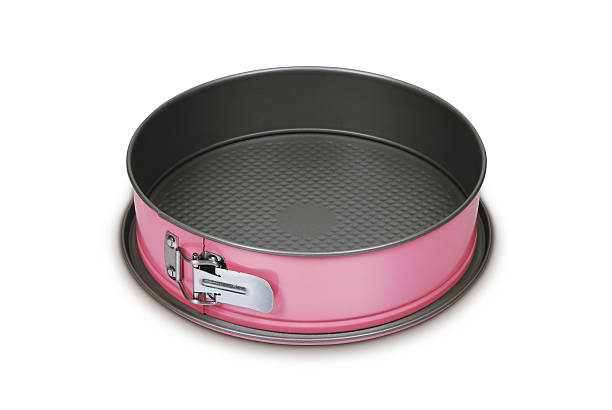
Springform Pans in Cultural and Culinary Context
Springform pans have a significant impact in both cultural and culinary contexts, influencing the way certain desserts are prepared, presented, and enjoyed around the world. Here are some key points regarding the cultural and culinary significance of springform pans:
- European Influence: Springform pans have strong roots in European baking traditions, particularly in countries like Germany and Austria. The design of the springform pan, with its detachable ring and latch mechanism, is well-suited for creating elaborate and delicate desserts that are common in European cuisine.
- Cheesecakes: Perhaps the most iconic use of springform pans is for baking cheesecakes. Cheesecake recipes have evolved over centuries, and the use of springform pans allows for easy release and presentation of these creamy and indulgent desserts.
- Tarts and Quiches: In French cuisine, springform pans are often used for making tarts and quiches. The removable ring allows for beautifully decorated and evenly baked tart shells, filled with savory or sweet ingredients.
- Layered Cakes: Springform pans are also utilized in creating layered cakes with multiple fillings or frosting. This technique is common in European pastry making, where precision and presentation are highly valued.
- Innovative Desserts: The versatility of springform pans has inspired chefs and home bakers worldwide to create innovative desserts. From ice cream cakes to mousse cakes, the ease of assembly and release offered by springform pans allows for endless creativity in dessert making.
- Celebratory Occasions: In many cultures, elaborate desserts made in springform pans are associated with celebratory occasions such as weddings, birthdays, and holidays. These desserts symbolize joy, indulgence, and communal gatherings.
- Professional Pastry Making: In professional kitchens, springform pans are essential tools for pastry chefs and bakers. They enable precise assembly, baking, and presentation of intricate desserts that showcase culinary skills and creativity.
- Global Influence: While springform pans have European origins, they have gained popularity globally due to the widespread appreciation for desserts like cheesecakes, tarts, and layered cakes. Many cultures have adapted and incorporated springform pans into their culinary repertoire.
Overall, springform pans play a vital role in cultural traditions, culinary techniques, and dessert innovations worldwide. They have become synonymous with creating beautiful, delicious, and memorable desserts that bring people together and celebrate the artistry of baking.
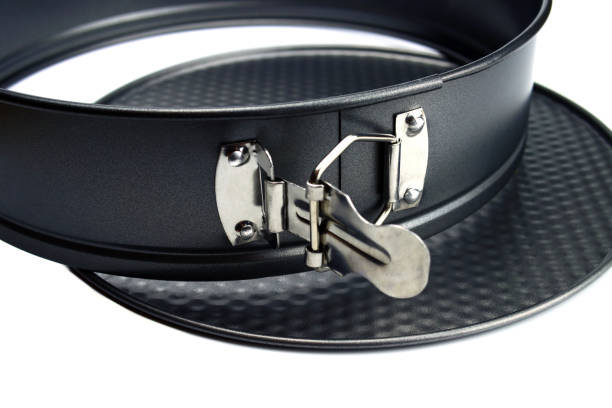
Frequently Asked Questions (FAQs) – What Is A Springform Pan
Q: What is a springform pan, and how does it work?
A: A springform pan is a baking pan with a detachable bottom and a spring-like mechanism around the sides. It allows for easy removal of delicate desserts like cheesecakes and tortes without damaging their structure.
Q: What are the benefits of using a springform pan?
A: Springform pans offer convenience and precision in baking. They ensure even baking and allow for seamless release of baked goods, making them perfect for elaborate desserts that require a neat presentation.
Can I use a springform pan for savory dishes too?
A: Absolutely! Springform pans are versatile and can be used for both sweet and savory recipes. From quiches and savory tarts to layered casseroles, they provide flexibility in your culinary creations.
Q: Are springform pans easy to clean?
A: Yes, springform pans are typically easy to clean. Their non-stick coatings or removable bottoms make cleanup a breeze, saving you time and effort in the kitchen.
Q: Do springform pans come in different sizes?
A: Yes, you can find springform pans in various sizes to suit your baking needs. Whether you’re making a small dessert for two or a larger cake for a gathering, there’s a springform pan size that fits.
Q: Are springform pans durable?
A: Quality springform pans are made from sturdy materials like stainless steel or heavy-gauge aluminum, ensuring durability and long-lasting performance with proper care.
Q: Can I use a springform pan in a water bath for baking delicate desserts?
A: Yes, springform pans are compatible with water baths, making them ideal for baking custards, cheesecakes, and other delicate treats that benefit from gentle, moist heat.
Q: Are there any special tips for using a springform pan effectively?
A: To get the best results from your springform pan, it’s recommended to line the bottom with parchment paper for easy release, and to grease the sides to prevent sticking. Additionally, avoid using sharp utensils that may scratch the non-stick coating.
Q: Can I use a springform pan in the oven at high temperatures?
A: Most springform pans are oven-safe up to a certain temperature range, typically around 450°F (232°C) or higher, but it’s always best to check the manufacturer’s instructions for specific heat limits.
Q: Where can I buy quality springform pans?
A: You can find a wide selection of high-quality springform pans at kitchenware stores, online retailers, and specialty baking shops. Look for reputable brands known for their durable construction and reliable performance.
Conclusion
In conclusion, a springform pan is a versatile and indispensable tool in the kitchen, especially for baking delicate and intricate desserts like cheesecakes and tortes.
Its unique design with a removable bottom and sides that open and close with a latch allows for easy and clean removal of baked goods without damaging their delicate structure.
The springform pan’s ability to create beautifully shaped and professional-looking desserts makes it a favorite among home bakers and professional chefs alike.
Whether you’re a baking enthusiast or a culinary professional, having a springform pan in your kitchen arsenal opens up a world of possibilities for creating stunning and delicious treats.
Other Articles You May Also Like:
- What Is A Baking Pan (3 Amazing Things To Know)
- What Is A Broiler Pan (4 Secret Things)
- What Is Grill Pan (4 Surprising Facts)
- What Is A Muffin pan (9 Eye-Opening Things To know)
- What Is A Saucepan (7 Things You Should Know)
- What Is A Tube Pan – Tube Pan Vs Bundt Pan
- What Is PFOA? (7 Cool Facts To Know)
- What Is A Hotel Pan (6 Cool Facts You Need To Know)